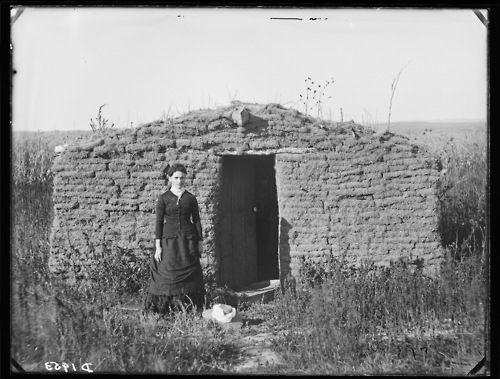Schoolteacher Miss Mary Longfellow holding down a claim west of Broken Bow, Nebraska.
An article in a recent issue of Smithsonian Magazine provided an overview of the Homestead Act, which gave land free to those who would live on it:
The Homestead Act, signed by Lincoln on May 20, 1862, embodied a radical promise: free land for the masses. Until then the federal government had generally sold its unoccupied property, favoring men with capital. As a result, by the 1840s big farms were consuming smaller ones, and efforts to change the system were gridlocked as Congressional debate over slavery intensified. The problem became so pressing that Representative Galusha Grow, a Pennsylvania Republican, warned in 1860 that the nation was courting “a system of land monopoly—one of the direst, deadliest curses that ever paralyzed the energies of a nation or palsied the arm of industry.”Further details at Smithsonian. Photo credit Solomon Butcher, via Cool Chicks From History, with these additional comments from NebraskaStudies.Org:
From the moment the first homesteader, Daniel Freeman, stepped foot into his local land office in 1863 to apply for 160 acres in Beatrice, Nebraska, to the day in 1979 when the last homesteader, Ken Deardorff, of Alaska, filed for a title to his 50-acre claim, four million settlers—men and women, former slaves and new immigrants—attempted it. About 1.6 million succeeded, homesteading a combined total of 270 million acres, or 10 percent of the country.
The Homestead Act of 1862 stated that any person age twenty-one and head of a family could claim land. The Act also contained the provision that widows of Union soldiers could deduct the time of service their husbands spent in the Civil War from the five-year residency requirement. So, while the phrase "head of a family" did place limitations on which women could file, many women took advantage of the Homestead Act and other laws to file claims in their own names.

Cool pic. Humbling. Interesting and worthy reading. Thanks.
ReplyDelete